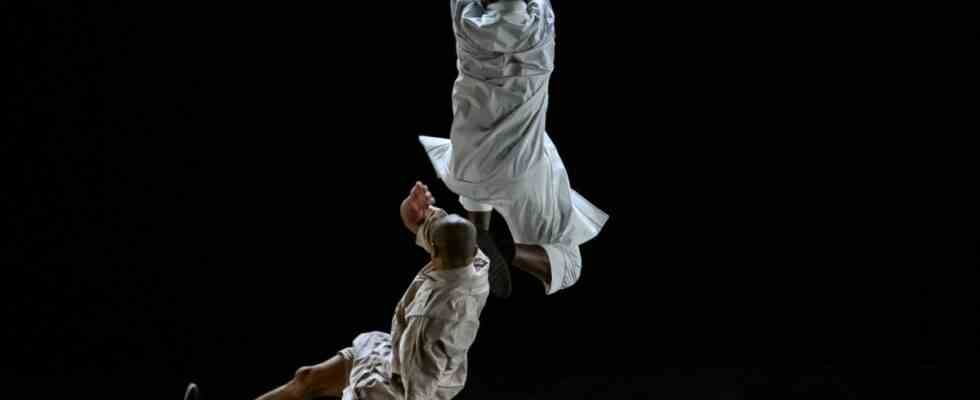You could totally rely on this performance: Virve Sutinen has been opening the Berlin “Tanz im August” every year since 2014 in flawless English. The Finnish curator then surfed through the presentation of the festival program no less casually. Audiences, artists and critics must now say goodbye to this. The current festival edition ended last weekend and with it the Sutinen era.
The outgoing boss could hardly have gotten a better exit than the 2022 edition. Sutinen made a strong ending that raised the question of the reasons for her not-quite-voluntary abdication. Annemie Vanackere, director of the theater combine Hebbel am Ufer, which acts as host and producer of the festival, has appointed her in-house dance curator Ricardo Carmona as his successor. It is not an easy inheritance for him. Its predecessor hammered in a few pegs that didn’t bring the festival back the glamor of its early years in the eighties, but did give it unique selling points. For example, the retrospectives exclusively featuring women dancers: whether Rosemary Butcher, La Ribot or, most recently, Cristina Caprioli – there was always something original to discover. In addition, Sutinen’s understanding of dance knew no blinders: she put formats from all over the world and all genres up for discussion and also risked failures.
This year, of all things, the start of the festival got tangled up in the pitfalls of the politically correct. “Jurrungu Ngan-ga” from Australia came across as an unconvincing parable of injustice that quickly died out in the performative monotony. The creation of the Canadian Daina Ashbee “J’ai pleuré avec les chiens – time, creation, destruction” turned out to be a cute frolic of a handful of nudists. But after a few days, the festival was swinging with Marcos Morau’s wispy “Sonoma” and Oona Doherty’s Bonjour Tristesse Ballad “Navy Blue” (SZ of August 12) reported operating temperatures that rivaled those of the Berlin summer. The high held up to the finish line and the two antipodes posted there: Adam Linder’s “Loyalty” and Bruno Beltrão’s “New Creation”.
Adam Linder’s “Loyalty” pays homage to the prime roles of the 19th century
Pleated curtains limit the field of vision, and to the left is a magenta-colored object – half Snow White’s coffin, half artifact from the computer Stone Age. Two figures appear in a gap in the fabric, one backwards, the other in semi-profile with the finest ballet posture. This is how Linder’s brilliant “Loyalty” begins, which within an hour first models the movement canon of classical dance, then decomposes and restructures it. Adam Linder, once transferred from London’s Royal Ballet School to the ballet renegade camp, does not simply return to his roots. Rather, he dismantles the aristocratic and romantic tradition of his art, assisted by a dancer who takes the female sacrificial mysticism to ballerina extremes: stark naked, Doug Letheren digs a grave in the stage airs and lies down in it, arms demurely crossed over his chest . This epitaph pays homage to the parade roles of the 19th century.
Where Linder destroys the ballet with historical means and resurrects it, Beltrão takes a radical look at the present and the situation in his Brazilian homeland. It is not for nothing that his work runs as a neutral “New Creation”, which emphasizes the open, the approximate as a reflection of an uncertain state of society. Ten performers move in alternating loops through intimate miniatures and tutti scenes, in between the unadorned stage plunges into complete darkness. Beltrão follows a two-pronged pictorial program between Christ iconography and street scenes full of violence, greed and contempt. Nor can the brutality suddenly turn to comfort and compassion. But nobody knows when and why.
The thematic matrix of the choreography is the strengthening of the evangelicals, the economic downturn and the prospect of a continuation of the Bolsonaro regime, which are driving Brazil and especially its young generation to despair. The quality of such performances remains the benchmark for “Tanz im August”. So also for the new curator, Ricardo Carmona.

